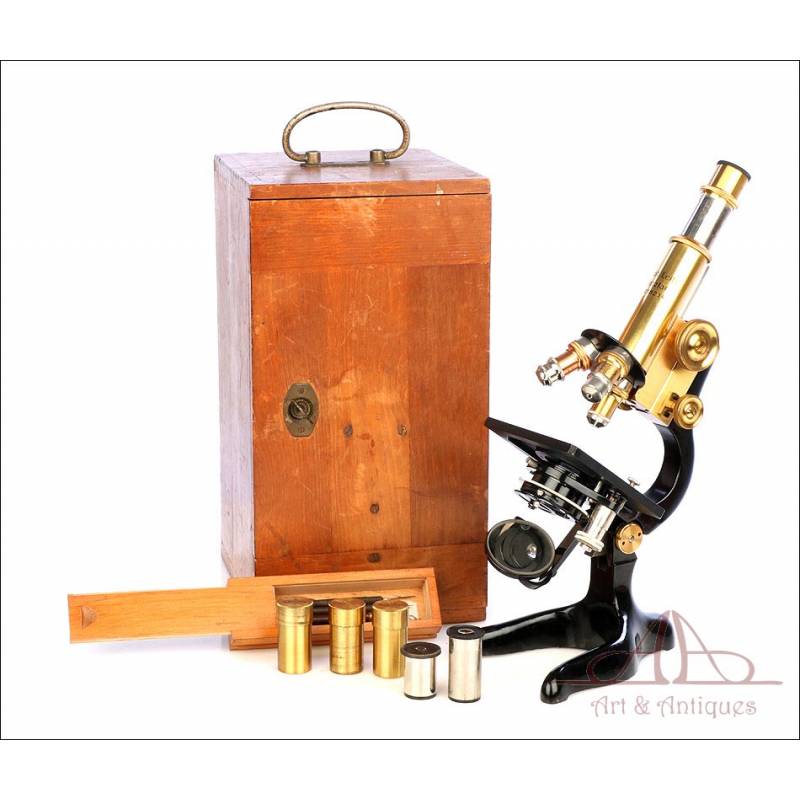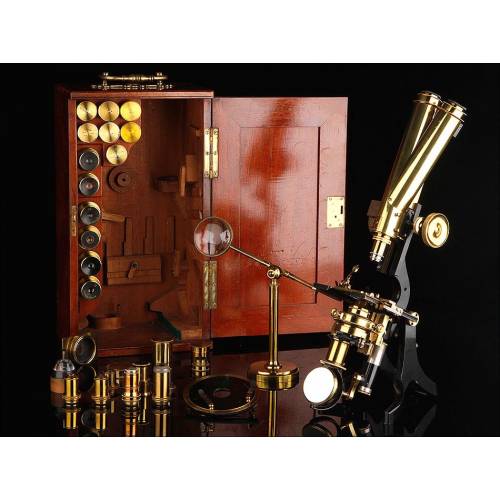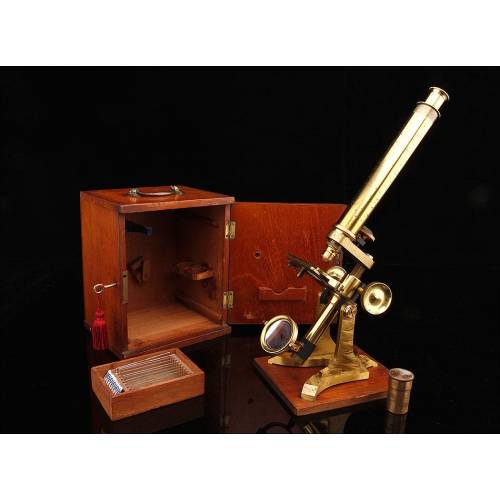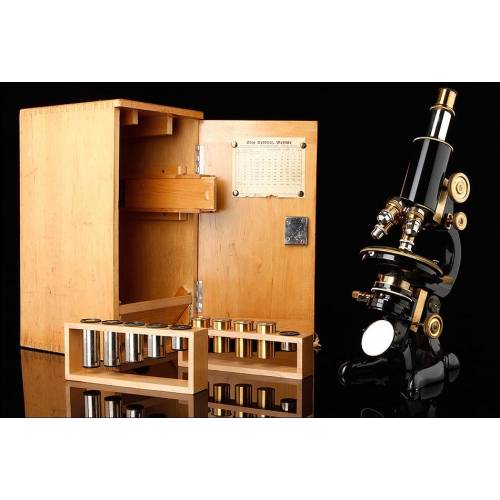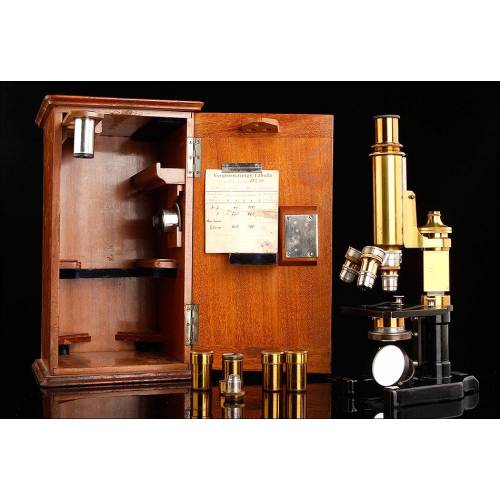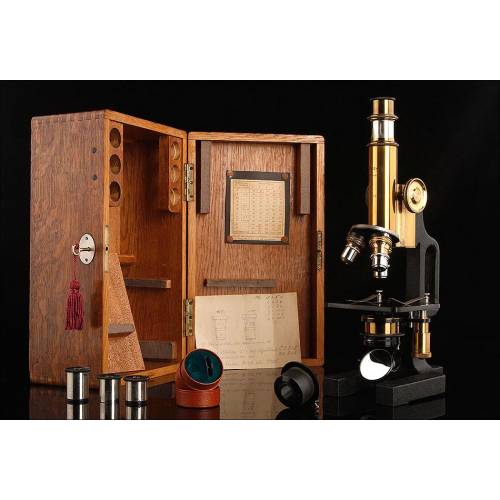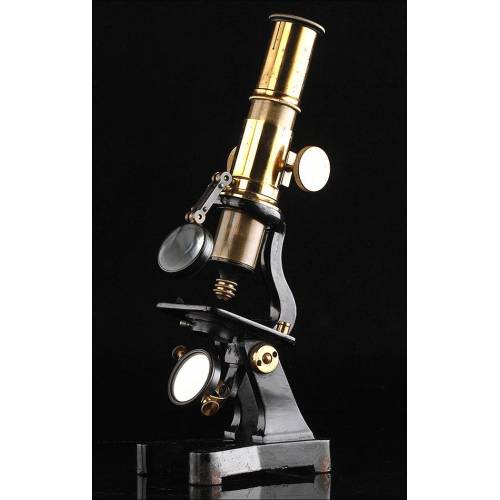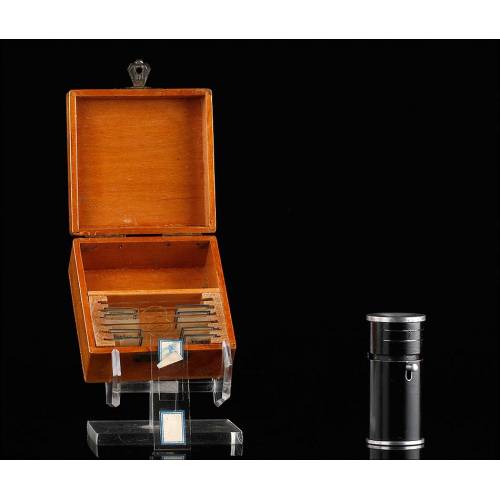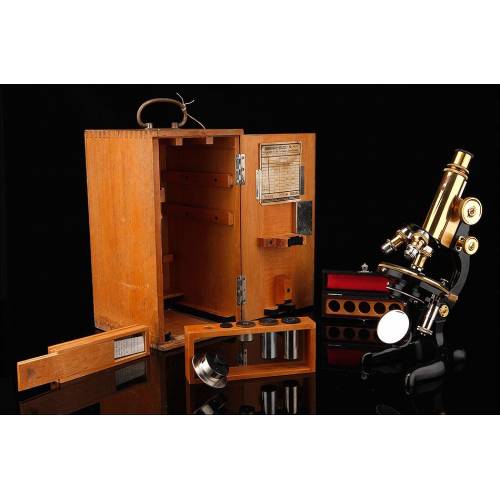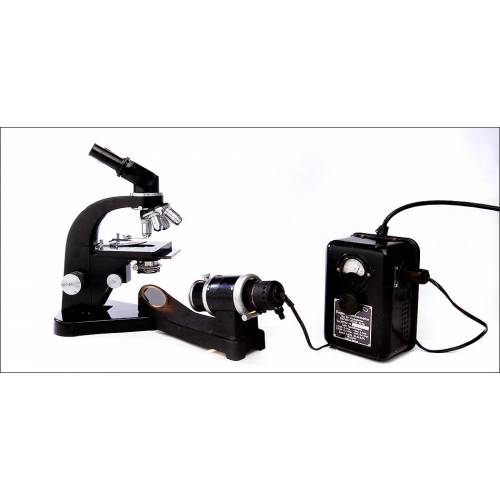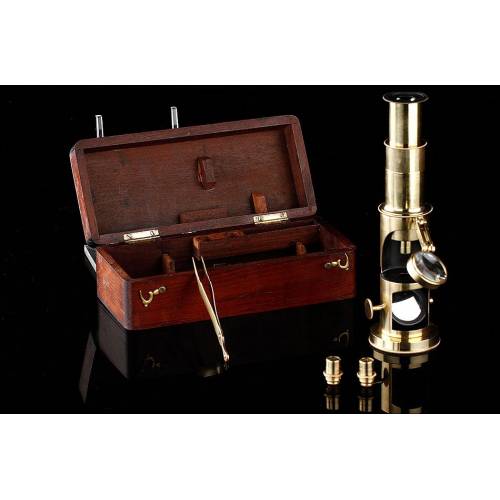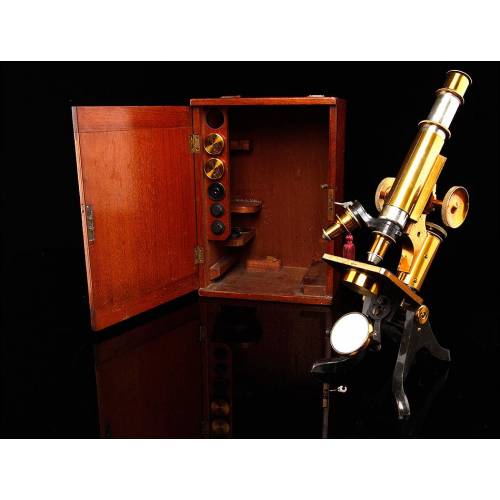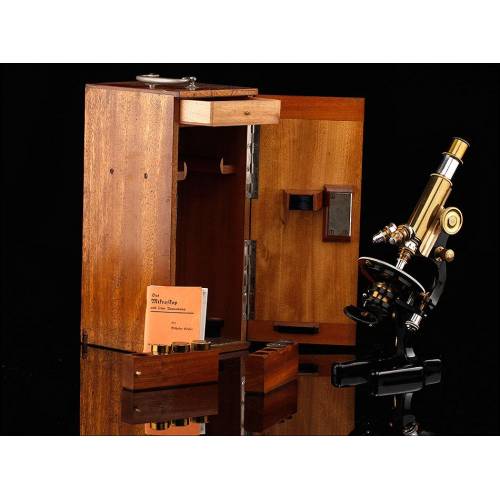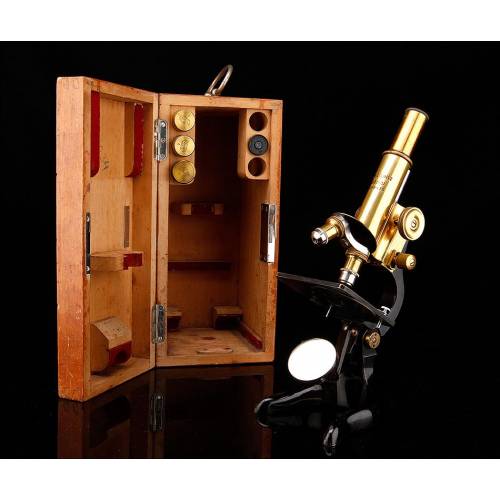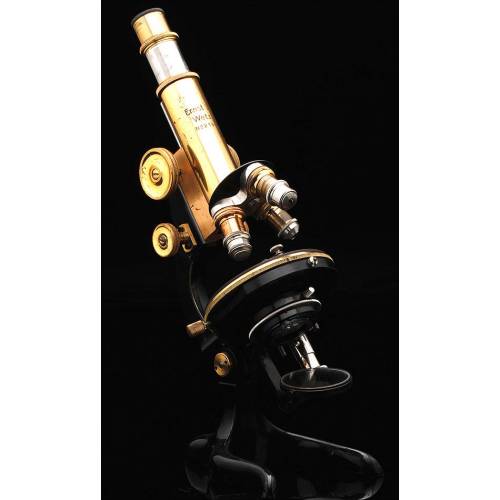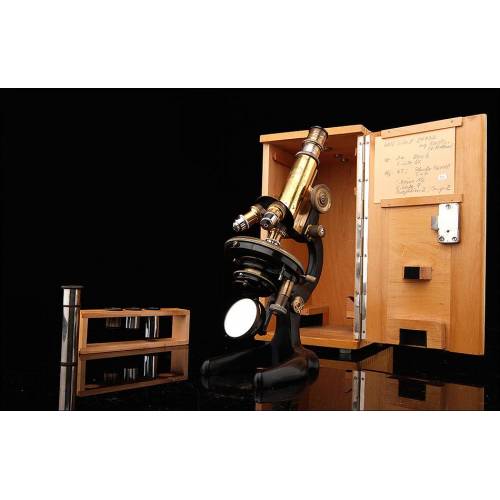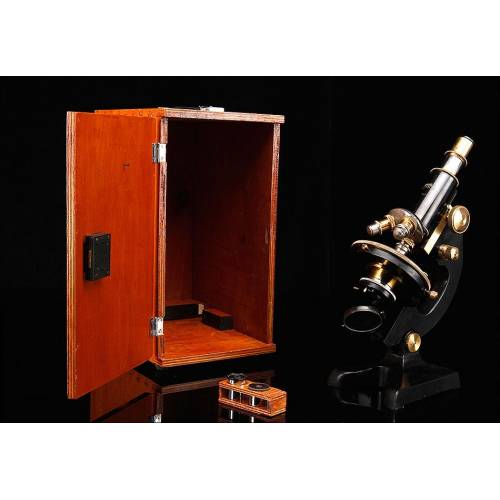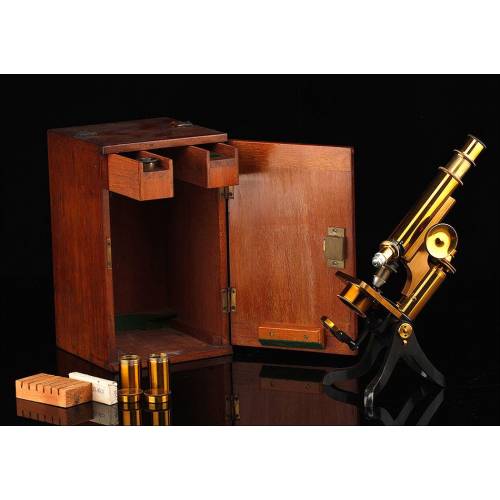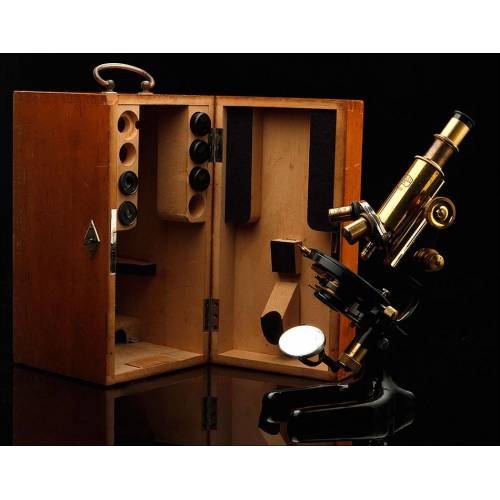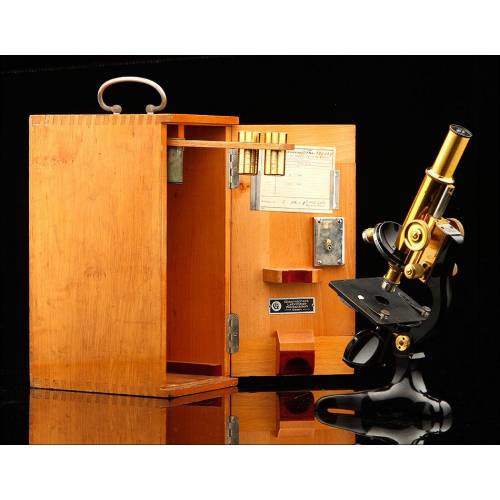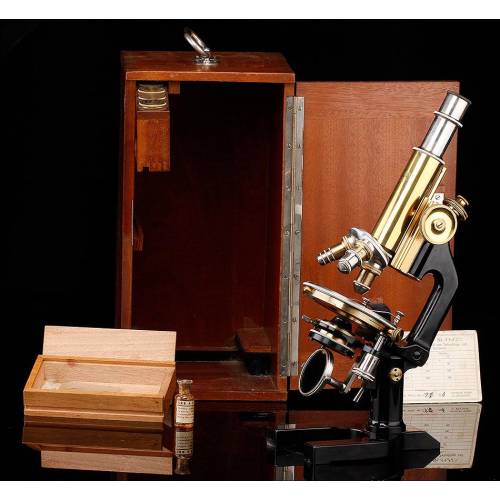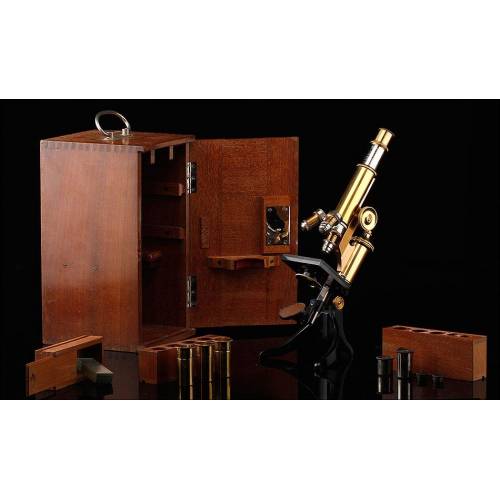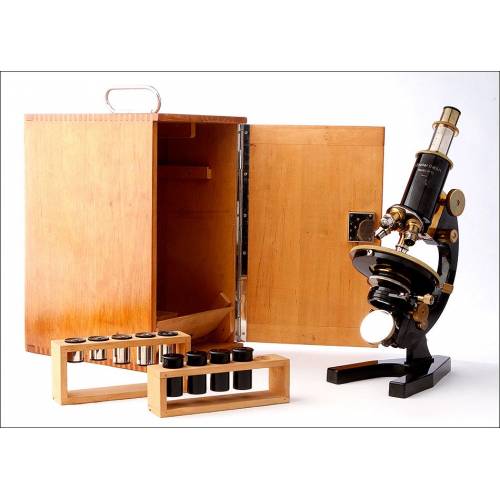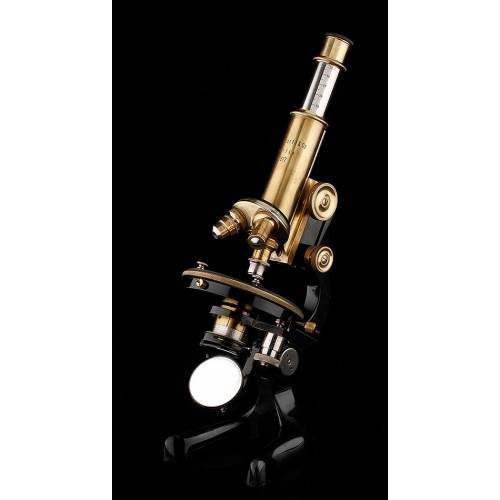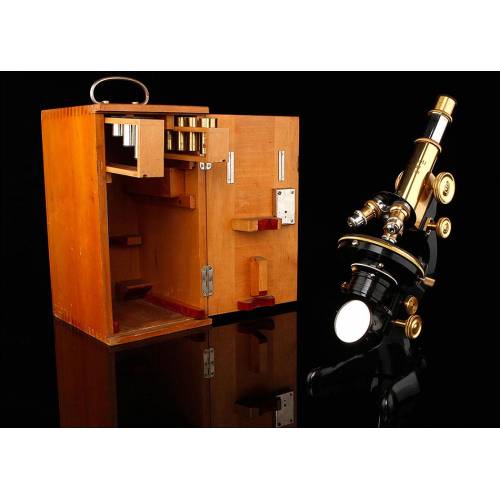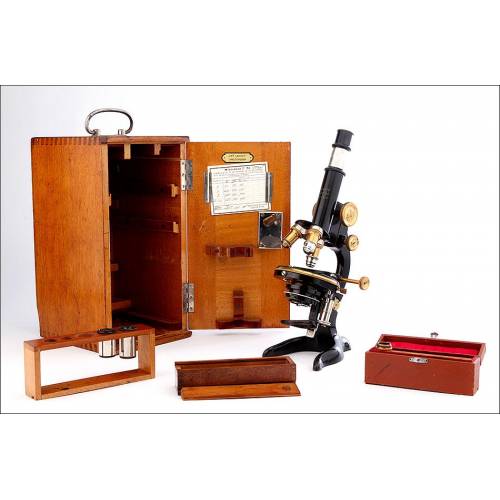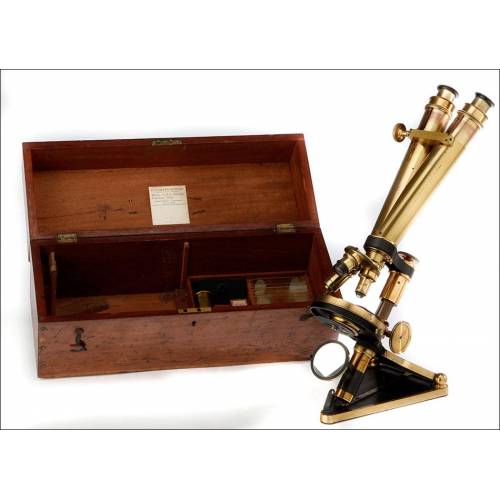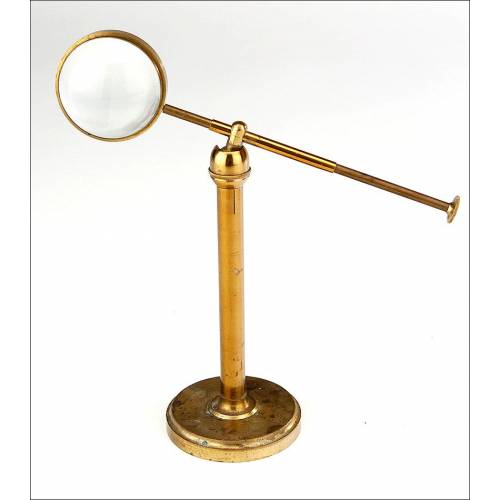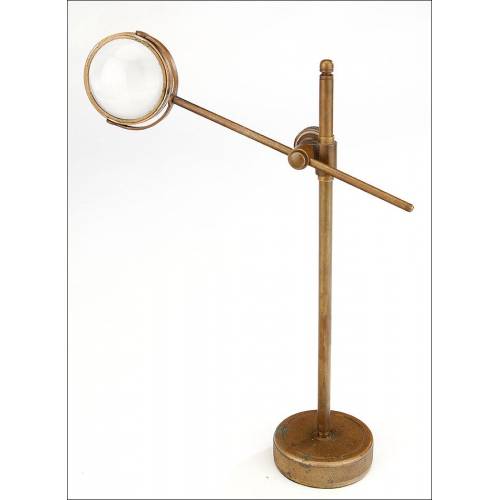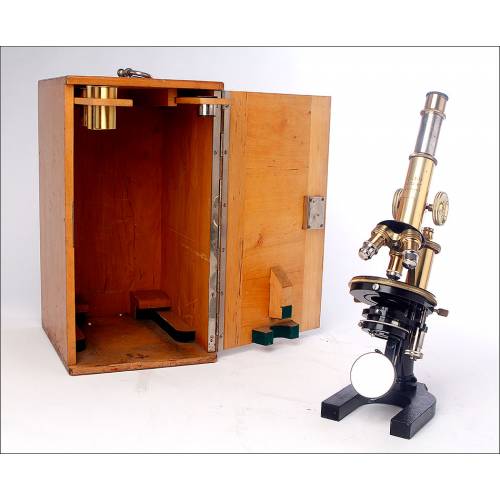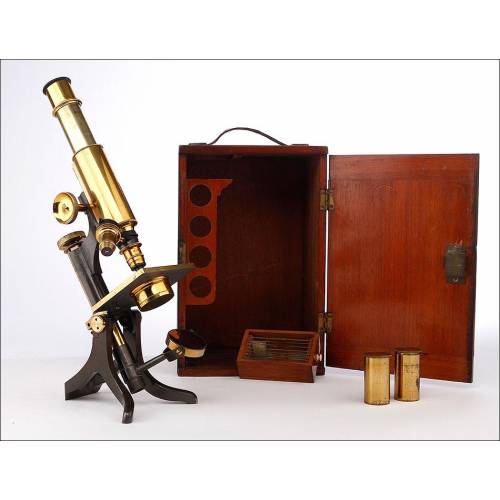C-957
Striking Antique Leitz Wetzlar Microscope. Germany, Ca. 1923
Wonderful antique Leitz Wetzlar microscope in perfect working order. With a complete accessory set. Finely preserved. Original storing case.
Sold!
Striking antique Leitz Wetzlar microscope made in Germany circa 1923, in amazing condition and perfect working order. This item is a highly interesting piece for any collector and lover of old-time scientific devices, and stands out for its beauty and precision. It comes in its original storing case and is accompanied by an accessory set, containing two lenses (No. 3 and 6) and an oil-immersion lens. The set includes three eyepieces too. All the accessories are made by Leitz; the lenses bear the manufacturers logo engraved in their bodies and their brass sleeves. The factory identification cards bears handwritten information about the objectives, together with the devices serial number. The microscope mounts a three-lens revolving nosepiece, black-enameled metal horseshoe foot and brass top part. The enameled finish and the brass remain in an almost flawless condition; the transparent lacquer that covers and protects the metal surface is finely preserved and the black enamel look shiny, even and uniform. The turret bears the engraved microscopes serial number (Nº 218234); this number is also present in the wooden case and the factory card. The rack-and-pinion adjustment system is greatly preserved and works fine, just like the rest of the microscopes mobile component parts. This feature, together with its beautiful design and fantastic condition, turns this device into a real museums piece worthy of the best collection. Every lover of early-20th-century scientific instruments will see a real find in this amazing antique Leitz Wetzlar microscope, complete and perfectly functional. Dimensions: Width: 6.8 in / 17 cm. Height: 14.8 in / 37 cm.Ernst Leitz Wetzlar History The beginnings of the famous optic material manufacturing company named Ernst Leitz Wetzlar can be found in the first half of the 19th century, when the mechanic and selft-taught mathematician Carl Kellner founded the Carl Kellner Optisches Institut in Wetlzar, Germany. After his early death his widow maintained the business, and in 1864 the mechanical engineer Ernst Leitz entered the company. Just five years later, Leitz took control of the firm and changed its name for Ernst Leitz Wetzlar. Leitz led the company to success after introducing improvements such as serial production, raising sales volume rapidly after 1871. Leitz microscopes included technical improvements that increased their quality; by the late 19th century the company already had a worldwide reputation. Ernst Leitz died in 1920 and the leadership of the firm passed to his son. As well as for their microscopes and optic material, Leitz became hugely famous for their famous Leica cameras (abbreviation of Leitz Camera).

